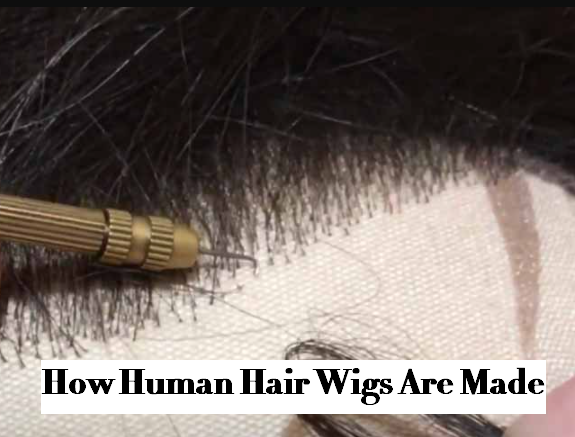How Human Hair Wigs Are Made & Manufactured - Process of Wig Making
Human hair wigs are usually used for cosmetic or medical reasons, hair business owns a huge market, but do you know the manufacturing process of wigs? Now, we’ll learn about how human hair wigs are made and what steps or tools are required in this process.

How Human Hair Wigs Are Made & Manufactured - Process of Wig Making
Machine-made wigs often go through similar steps and processes and are faster to get final hair products, while handmade wigs need a longer time to make and are often customized based on clients’ heads. Below is the process of human hair wigs manufacturing.
1. Make head mold
- Tie up and clip the guest's hair. Generally, girls have a very low chance of total baldness. They need to tie up their hair before wearing wigs like loose wave hair. Then cover the top of the head with plastic film and simulate the shape of the head.
- Fix the plastic film with adhesive tape.
- After fixing, record the position of the hairline and center point.
- After removing a plastic head, the barber will draw the direction and length of hair in each area according to the hairline and the position in the hair.
- Then fix the plastic head shape on the special wood head model. Use a nail to pierce the previously drawn partitions, then remove the plastic head shape and draw a line on the wood head, so that the real person's hair information can be transferred to the wood model.
2. Make hair net
- To make a body wave wigis actually to fix the real hair on the hair net, so the first thing is to make a hair net, the raw material is meshed fabric, and the hair is then connected and fixed in these small holes. When sewing a hairnet on a wooden model, they will also use an iron to press the hair net, so as to make the hair net close to the scalp as much as possible.
- The hairnet is not a single layer but is often composed of many pieces of cloth. The master first sews the thread and fixes it, and then sews several pieces of cloth together with a sewing machine. In this way, the hair net is particularly firm.
3. Prepare hair
The hair length of the hair block is very long at the beginning. It may be coiled together and has various colors. It can not be directly used to make wigs and should be cut to the required length and selected the required color according to the production requirements. The newly cut hair is messy and needs to be combed. At the same time, some different color wigs need to be handled through this process. The tool used is a relatively large steel tooth comb. The more times you comb, the smoother the hair will be. Every wig has the size and weight limitations. It can't be too thick or too thin. The staff needs to weigh the hair according to the drawing requirements, and the weight directly affects the following production process.
4. Process hair
The workers put the collected hair into the disinfection tank for disinfection, then put in different colors of dyes to soak for an hour and pick it up.
5. Grade hair
If observed under a microscope, there are many small scales superimposed on the outermost layer of human hair, and these hair scales will grow in the same direction and will be very straight. However, the collected hair is often wrapped together, and the direction of hair scales is also different, so they will be knotted together. Therefore, you need to manually comb your hair to make it soft. This link is also called grading hair. First, the workers tidy their hair by hand and then comb it on a pull plate filled with long steel needles. I also found a documentary that is specially made by hand. After many times of straightening, the sorted hair is tied into a small bundle and placed in the frame for the next link.
6. Knot hair
The most important link - hair knotting. The worker uses a hair knitting needle with a little hook so that as long as one hook, a strand of hair can be hooked from one side of the hair sleeve to the other side through a small hole.
- First, the workers will choose the appropriate length of hair, then hook the hair with one hand and turn it around with the hook needle with the other hand. In the blink of an eye, a strand of hair will be woven into the hair cap, and more than 200 hairs will be hooked per square centimeter.
- In order to make the wig more realistic, workers will weave the hair according to the hair trend in different hair areas. Different hair hook methods can also make the hair more hierarchical, which is also the main reason why human hair wigs look so natural.

